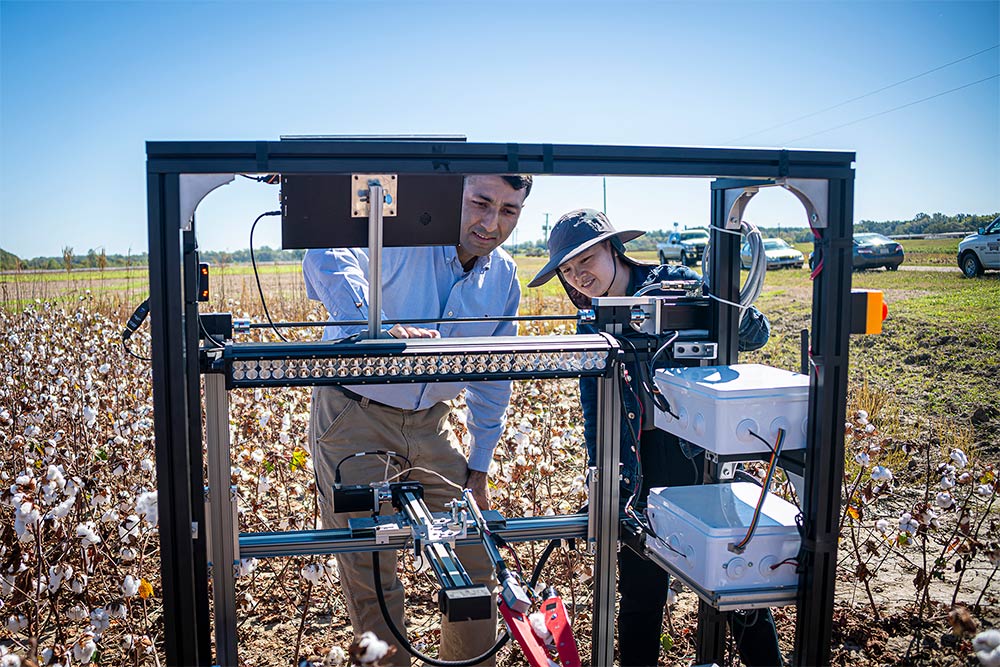Cotton-Harvesting Robotic Arm Design to Benefit Farming Industry
The robotic arm, designed for targeted harvesting of cotton bolls, has potentially game-changing applications across agricultural sectors

Engineers from Mississippi State University (MSU) have designed a robotic arm that can autonomously pick cotton, a design the team said could be a potential game-changer for the agricultural industry.
The two-fingered robotic arm, or “end-effector,” can pick one cotton boll at a time rather than all at once.
This method differs from that seen with traditional harvesting machines, which collect cotton bolls en-masse. According to the MSU team, the plants are harvested when only around 60% of the cotton bolls are open.
The robotic arm is fitted with cameras to allow it to identify whether cotton is ready to be picked or not, and has a high level of dexterity to allow it to pick fiber from each individual cotton plant.
“The cotton plant presents unique challenges to an AI-based camera system because bolls can be oriented in different directions, and seed cotton is not solid and contiguous like an apple,” said Hussein Gharakhani, lead designer. “Our end-effector, which took about a year to develop, works with our camera-based perception system to identify and retrieve the fiber from the boll.”
The team said the design has potential applications beyond the cotton industry, capable of harvesting a range of crops and easing pressures from ongoing labor shortages.
“The systems technology we’re designing today will give tomorrow’s cotton farmers more ecologically and economically sustainable options for harvesting,” said Alex Thomasson, study co-author.
Next, the team is working on integrating the robotic hand into a six-degree-of-freedom robotic arm and a four-wheel drive robotic platform from Clearpath Robotics, to make a fully autonomous harvester.
The harvester features an AI perception module, made up of an RGB-depth-based camera, a 3D lidar sensor for obstacle avoidance and an AI-based processor to allow for more precise harvesting capabilities.
“For the last few years, we’ve been building and testing these systems individually, and over the next year, we’ll focus on integration and navigation with the goal of building a completely autonomous harvester that can work across unpredictable and uneven terrain,” said Xin Zhang, study co-author.
About the Author
You May Also Like








